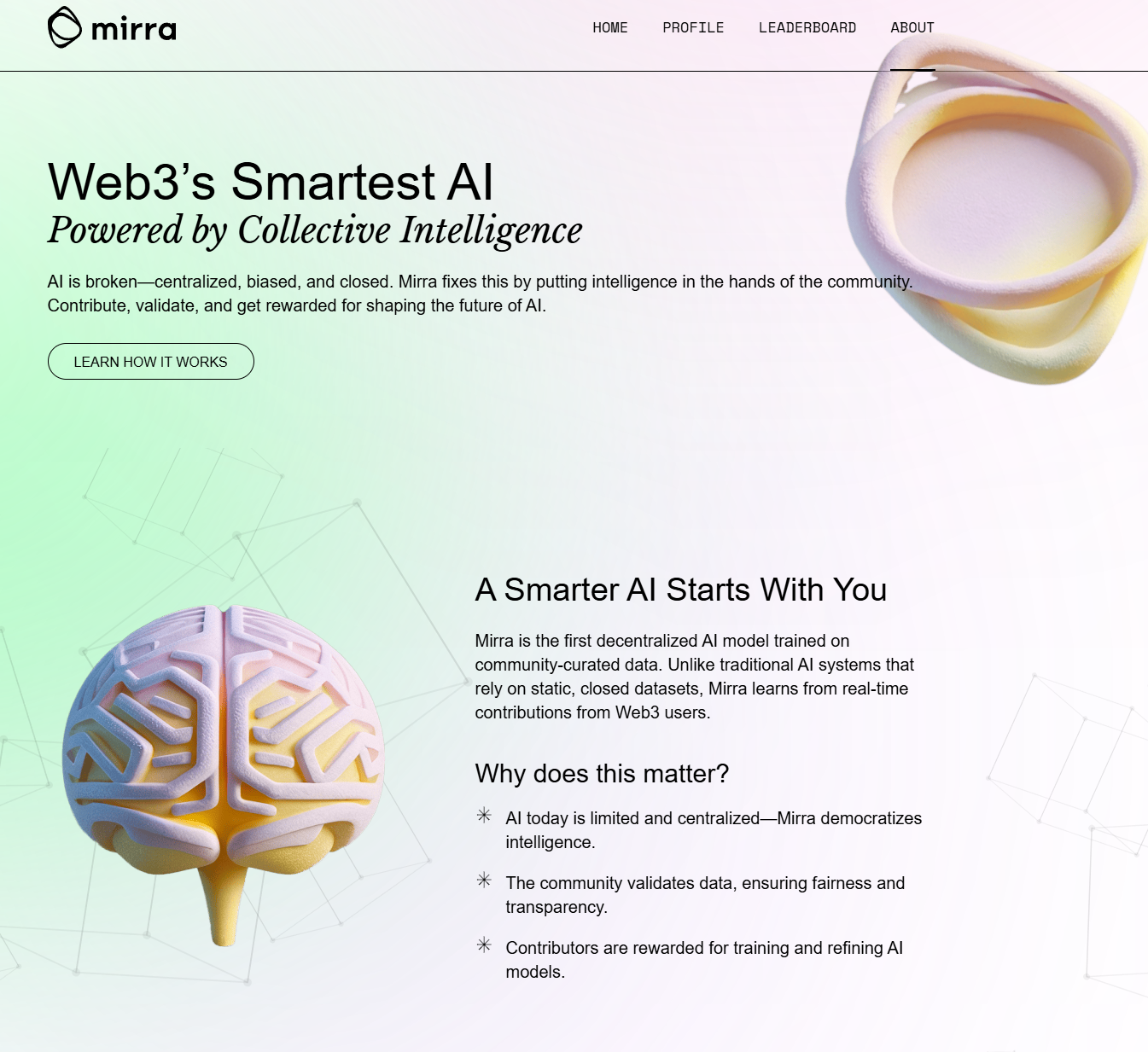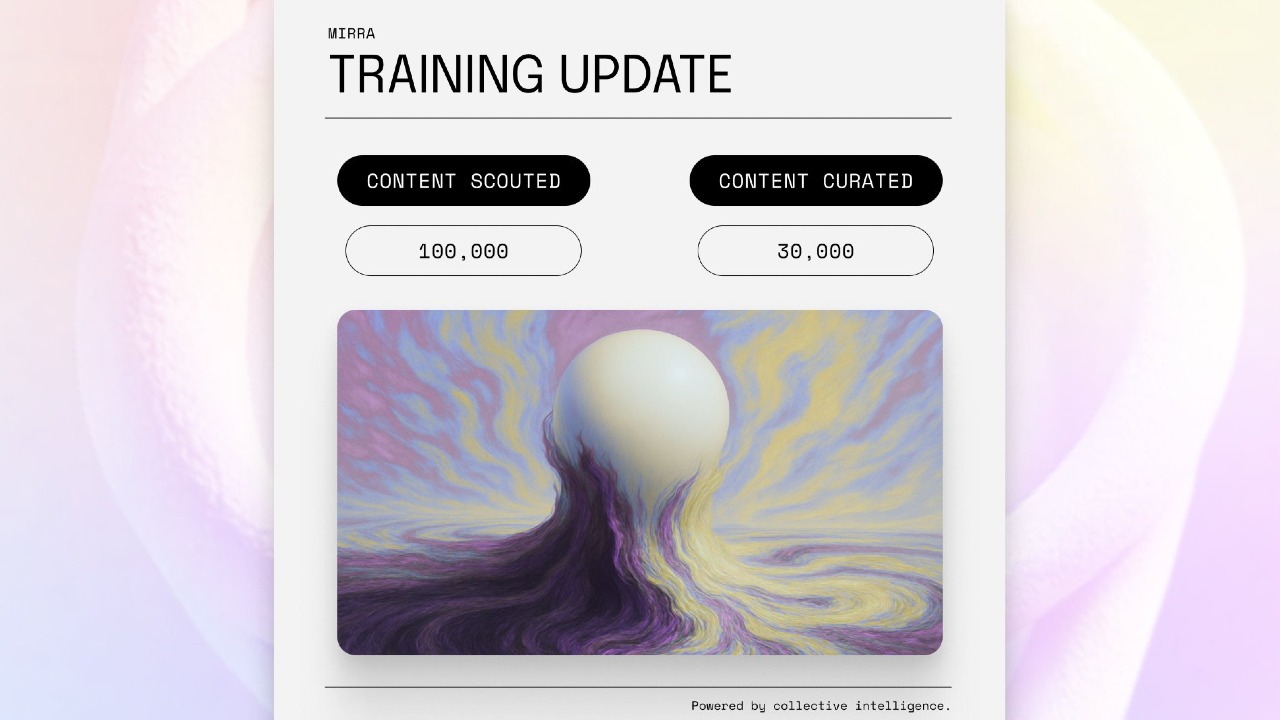MIRRA Airdrop: A First-Principles Analysis
1. The Real Problem Mirra Is Addressing
Most AI today is built on opaque data pipelines, controlled by centralized entities who own both the model weights and the user data. The public’s role in this process is passive: you generate data, they extract value.
Mirra challenges that structure.
Its core thesis is that intelligence should be trained, curated, and shaped by the community that uses it — not by a corporate lab optimizing for internal KPIs. To do this, Mirra ties training data to verifiable social input from X (Twitter), allowing real users to:
- Surface content (scouting)
- Create content (insights)
- Validate relevance (via tagging and engagement)
This approach shifts the locus of control from AI teams to a decentralized, on-chain contributor base. It also aligns incentives: the people who improve the model earn a stake in the model’s future.
2. Why This Is Likely to Be Rewarded
Mirra distributes NLP (points) for participation. These points track contribution but are not yet tokens.
This mirrors the early patterns of projects like:
- Arbitrum (OG users accrued points but didn’t know it would be rewarded)
- Friend.tech (early participation created status that was later monetized)
- LayerZero, zkSync, etc. (ongoing point-based systems feeding into token allocations)
From an incentive theory standpoint, point farming only exists when the team is:
- Tracking data quality across participants
- Running internal models to weigh contribution
- Setting up future retroactive drops based on structured history
In other words: the point system is the airdrop scaffolding.
By contributing early — when participation is low and the system is still calibrating — you position yourself in the highest percentile of quality-adjusted contribution.
If there is a token (which seems likely given the name NLP and the token-centric structure of Web3 projects), it will almost certainly be distributed based on these logs.
3. Asymmetric Time-to-Value Ratio
Unlike most airdrops that require bridging, staking, or costly on-chain actions, Mirra is:
- Free to participate in
- Entirely based on existing habits (X engagement)
- Uncapped in time commitment (you control the throttle)
For 5–10 minutes a day, you can:
- Scout a few high-quality posts
- Create your own
- Self-scout and comment-tag
- Share your referral link
This makes it low-cost, high-optionality exposure to a future token distribution — ideal for asymmetric reward strategies.
4. Political Alignment with Web3’s Original Ethos
Mirra is not just another AI tool — it is an experiment in open intelligence: models that reflect the diversity and messiness of community input, not just sanitized corporate datasets.
It sits at the intersection of:
- Decentralized data curation
- On-chain attribution of contribution
- Ownership of AI memory through tokenized XP
If Web3 is to offer a credible alternative to centralized AI, projects like Mirra are the testing ground. And early contributors play a governance role — not just a financial one.
5. Risks and Unknowns
- No token is confirmed yet
- No whitepaper or detailed tokenomics have been released
- The scoring system (NLP) may change or reset as the system matures
- There is some subjectivity in “quality” scoring, which may reduce transparency
However, all of these are typical of early-stage experiments. The real question is not whether these uncertainties exist — but whether the cost of engagement is low enough to make the trade worthwhile.
In Mirra’s case, the answer is yes.
Final Take
Mirra is a bet on decentralized AI training. If you're participating, you’re not just positioning for a token — you’re helping define what community-owned intelligence could look like.
The time cost is minimal. The upside, while speculative, is real — not because of hype, but because of the structural logic of contribution-based token distribution.
If you’re farming airdrops, this is one of the rare campaigns where contribution = alignment, and not just mechanical task completion.
That’s rare. And worth noticing.




